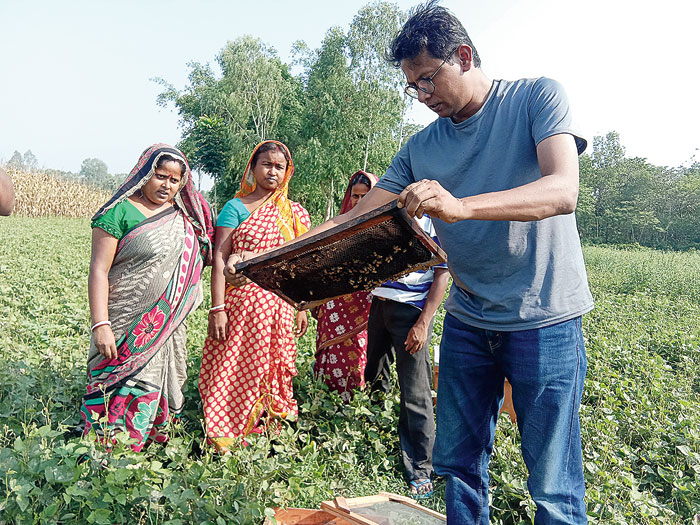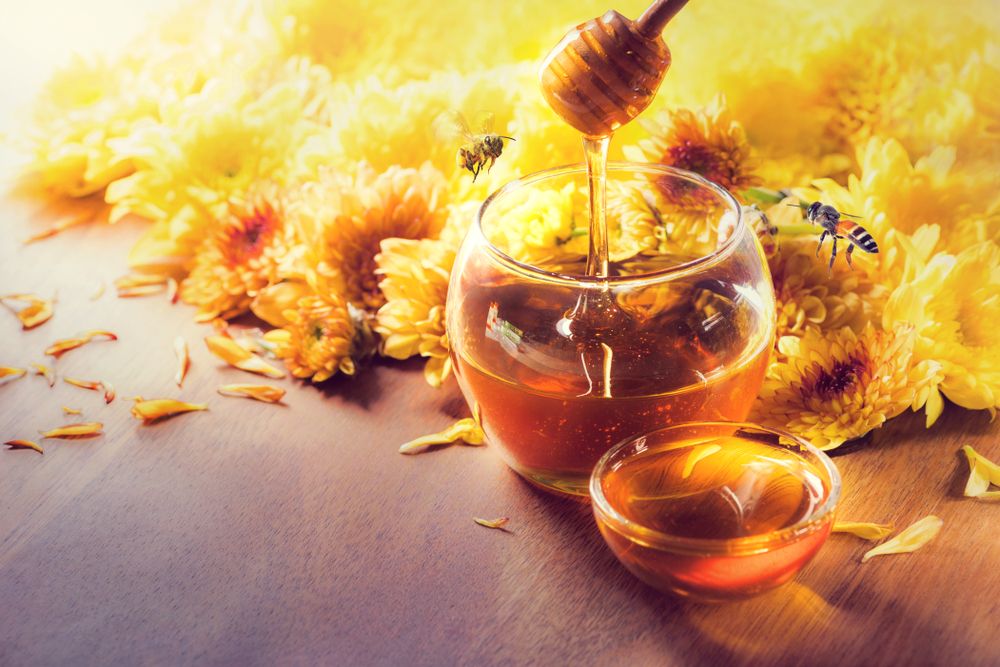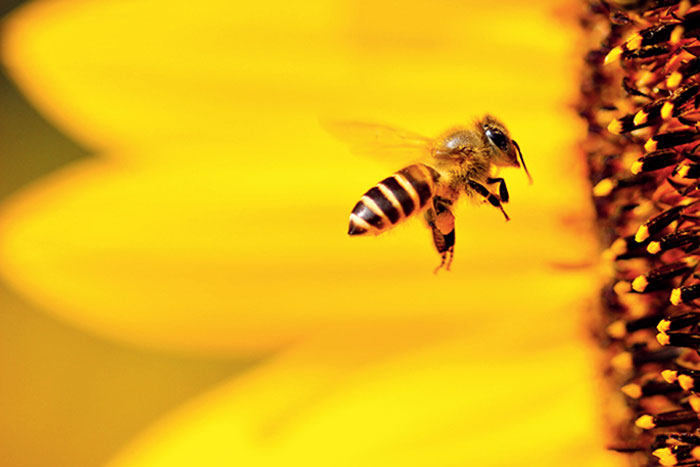The grand old Coffee House on Calcutta’s famed College Street is bustling. Left, right, centre — whichever direction you look, there is a group of people glued to their cups. The low humming sound from the constant chatter is reminiscent of bees buzzing. What better setting for a meeting with Calcutta-based Swarnendu Sarkar, a honey collector.
Sarkar’s interest in honey was triggered by a chance meeting with Baul artiste and apiarist Nikhil Biswas. Sarkar talks about how he had once read that the mountaineer, Edmund Hillary, had also been a beekeeper and that had stayed in his mind. “I was passionate and I learnt the technique of honey collection merely by observing people,” he says, staring at the golden honey in a hexagonal glass bottle.
In 2009 — he was in his thirties then — Sarkar quit his job as content writer in pursuit of bee farming. “I wanted to do something on my own and here was this business wherein you required neither a piece of land, nor water, nor electricity, no funds, nothing. It was practically a zero investment business. Toufa!” he says throwing up his hands in the air.
Sarkar, along with seven friends, started a co-operative. They collected honey and sent a sample to the Bose Institute, Calcutta, for testing. “The result was confounding. There was 29 per cent moisture in the sample, meaning the honey we had collected was dirty and impure,” he says.
In time, Sarkar learnt that 99 per cent of the bottled honey — known as capped or sealed honey — available in the market is not pure. “A honeybee collects nectar and pollen grains from a flower, eats some of it and stores the rest in a sack in its throat. Once back in the hive, it transfers the honey to the worker bee, which then transfers it to the next bee for safe storage,” he says.
This nectar is full of moisture and needs to dry before it becomes honey as we know it. The process continues as the worker bee (one who remains in the hive and does not go out to collect nectar) places it in a compartment and starts fanning it.
“The wings of the bee flap 200 times in a second. Once the moisture is less than 20 per cent, the bee seals the honey with wax in a compartment. There is no further contact with moisture. That’s why the term capped or sealed honey,” explains Sarkar.
According to him, the biggest risk to pure honey are the rains. That is when the honeybees consume the stored honey.
Sarkar set up his honey producing unit in Rajasthan; there were a lot of labour issues in Bengal and barely any support from the government, he says. He cultivates honey from the flowers of mustard, lychee, black cumin or kalonjee, sesame and eucalyptus. He also travels extensively to collect honey.
Sarkar says, “We get rosewood and wild berry honey from Rajasthan, ajwain honey from Haryana, neem honey from Alwar, wild honey from
Himachal Pradesh and Gujarat, white acacia and solai from Kashmir, white tulsi from Leh…”
And he is still trying to extract honey from the tea flower.
Sarkar did not receive any formal training in bees and honey collection but he has been organising workshops and attending seminars to make people aware of the methods of honey collection. He is a sympathiser of the Save the Bees project that is active in the US, Canada and some European countries. He talks about how pesticides are killing small insects. And how glyphosate is one such poison, so strong that the sensors of the bees stop working when they come anywhere near it.
He says, “My advice when it comes to honey collection is this: there is no need to break or burn down a honeycomb. There are scientific ways of extraction by which one can collect the honey and still not disturb the bees.”
Sweet Somethings
- There are 20,000 kinds of honeybees in the world
- India has close to 100 types of honeybees
- A single hive has about 1.5 lakh bees
- From one hive, one might collect 20-25kg of honey
- Only one teaspoon of honey can be obtained from 5,000 flowers
- A honeybee can collect one-twelfth of a teaspoon of honey in its life span.












